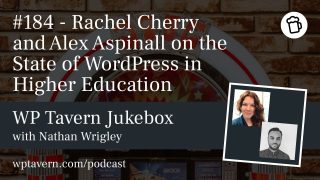Nathan Wrigley hosts Michelle Frechette and Jonathan Desrosiers on the Jukebox podcast to explain the history, differences, and relationship between wordpress.com and wordpress.org.
Origins and history
– WordPress began in 2003 as a fork of b2 by Matt Mullenweg and Mike Little. It’s open source software licensed under the GPL and available for anyone to download, modify, and run.
– Automattic, founded by Matt in 2005, created wordpress.com as a managed hosting service. It offered free blogs (yourname.wordpress.com) and paid plans with added features. WordPress.com runs WordPress at scale and introduced a simple, hosted path to publishing that helped popularize the software.
What .org and .com are
– wordpress.org is the site for the open source WordPress software. You download or install it (many hosts provide one‑click installs) and host it yourself. This is the “self‑hosted” WordPress, giving full control over plugins, themes, server settings, and code.
– wordpress.com is a managed service running the WordPress software. It offers free and paid tiers. Free plans are restrictive (limited themes/plugins/custom CSS), while paid plans unlock more features and approach parity with self‑hosted capabilities for many use cases. At the high end, wordpress.com (via Automattic) provides enterprise and e‑commerce plans and extra services.
Why the split matters
– Early web norms: historically .org implied community/nonprofit, .com commercial. In practice the split grew out of open source ideals (software in .org for the community) and a company solution to make publishing easy and a business model possible.
– Accessibility: wordpress.com lowered the barrier to entry in the early days when installing software and managing hosting was harder. It enabled many people worldwide to publish for free or cheaply.
– Portability: a core strength of WordPress is data ownership and the ability to export and move your content. This contrasts with many competing platforms where exporting content is difficult or impossible.
Community and perception
– The WordPress ecosystem includes both .org contributors (volunteers, developers, event organisers) and .com users/customers. Many community members come from the self‑hosted side (Meetups, WordCamps, Make WordPress contributions), creating a perception skew toward .org values.
– Some tension exists between open source purists and commercial interests, but there’s also significant overlap: companies and individuals who profit from WordPress often contribute back. Initiatives like Five for the Future encourage businesses and people who make a living from WordPress to give time back to the project.
– Skepticism of commercial entities is natural, but Automattic and other companies have historically been major contributors to the project’s health. Contributions take many forms beyond code—support, documentation, events, sponsoring contributors, and more.
Features, UX, and convergence
– Free wordpress.com limits plugins and themes; paid plans and enterprise tiers unlock much more. Self‑hosted (.org) sites have unrestricted access to plugins, themes, code, and server configuration.
– wordpress.com operates as a massive WordPress multisite instance—millions of sites running on a single infrastructure. That is technically impressive and provides a huge dataset of usage and feedback.
– Calypso was a distinct dashboard experience used by wordpress.com for several years. Recently there’s been movement toward aligning the wordpress.com and wordpress.org dashboards and user experience. Reasons include consolidating development effort, capturing more useful telemetry and feedback, and ensuring a unified experience that benefits the broader ecosystem.
– Making the same dashboard available across both platforms can improve feature parity, reduce duplicate maintenance costs, and make migration and user education easier.
Practical advice and perspectives
– Choice depends on goals: pick what fits your needs. Free wordpress.com is great for rapid, low‑risk publishing; paid wordpress.com plans simplify management without tech overhead; self‑hosted WordPress gives maximum control, flexibility, and extensibility.
– Be realistic about costs and responsibilities: wordpress.org is “free as a puppy”—the software is free, but hosting, maintenance, security, and optional premium themes/plugins or developer help have costs.
– Portability and ownership matter: WordPress’s export and migration capabilities are major advantages. You own your content, which matters long‑term for control, resilience to platform changes, and adaptability.
– Contribute or learn: community contributions (code, docs, translations, support, event organising) keep the ecosystem healthy. Contributions come in many forms and impact the project beyond raw hours—influence, quality, and reach matter too.
Final thoughts from the guests
– Michelle: .org and .com are not adversarial; they serve different audiences. Choose the option that aligns with your goals. Free .com opens publishing to people who might otherwise lack resources; self‑hosted .org forms the backbone of the contributor community that builds the project.
– Jonathan: Knowledge about these choices is a spectrum, not binary. Simplifying concepts and improving exposure to key differences helps more people make informed decisions and empowers broader participation in the web.
Summary
WordPress’s dual nature—open source software (.org) and a managed publishing service (.com)—grew from early project history, practical needs, and open source philosophy. Each has strengths: .com for ease and accessibility; .org for control and extensibility. They overlap and feed the same ecosystem, and recent efforts aim to reduce friction between them while preserving the project’s open principles. Choose the path that fits your needs, knowing migration and ownership are core WordPress advantages.


